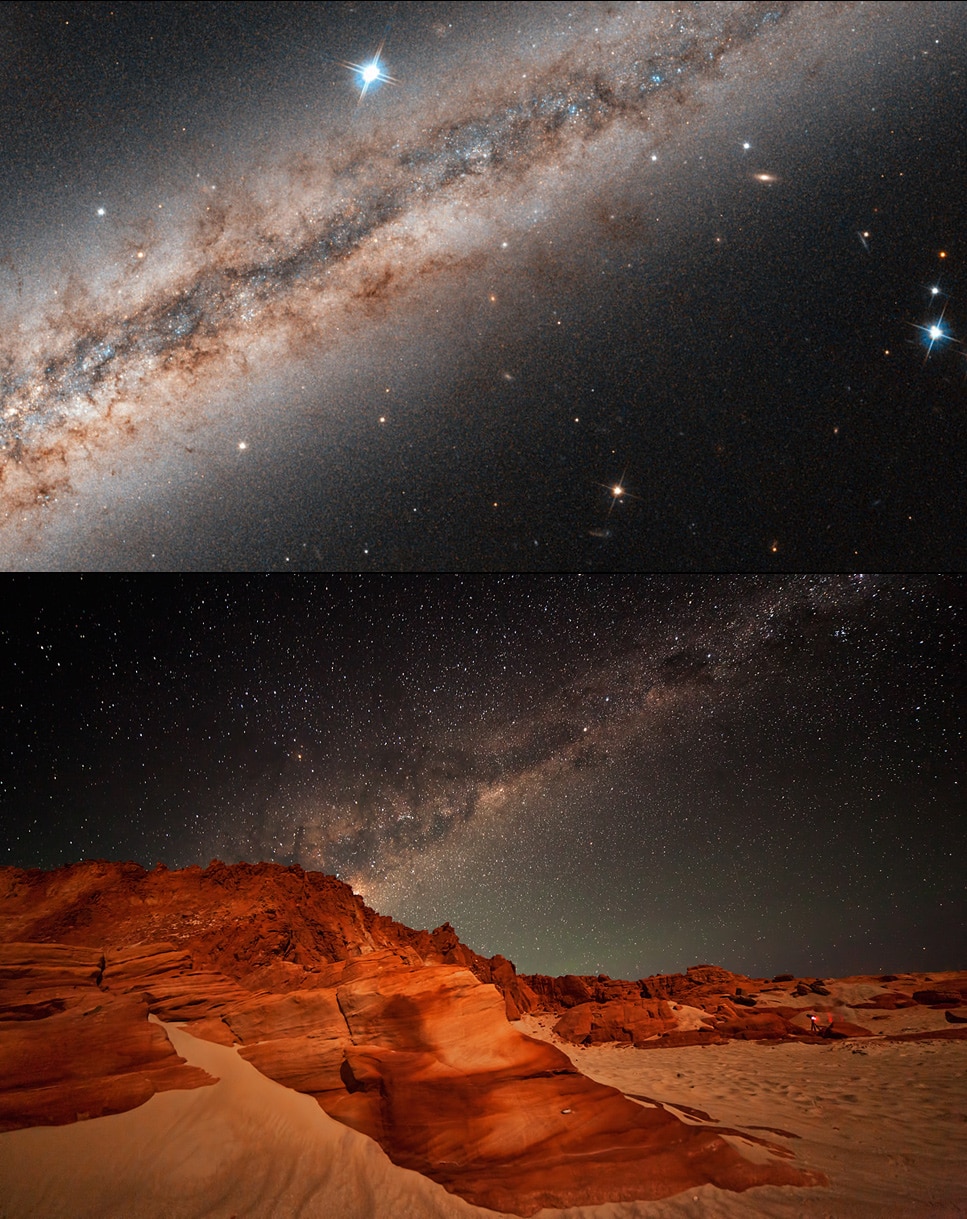Create a free profile to get unlimited access to exclusive videos, sweepstakes, and more!
Astrophoto: A galaxy living on the edge

Roughly 30 million light-years away, in the constellation of Andromeda, there’s an eerily familiar galaxy.
Called NGC 891, it’s a spiral galaxy, a massive collection of stars, dust, gas, and dark matter that has sculpted itself into a flat disk. It just so happens we view it from the side, almost perfectly edge-on. It’s close enough that we can see detail with ground-based telescopes, but far enough that Hubble’s clearer, but more narrowly focused, view can be used to create a mosaic of it as well.
Combine them and you get this magnificence:
This composite was created by Robert Gendler using images from Hubble, the 8.2-meter Subaru Telescope and the 0.81-meter Schulman Telescope at the Mt. Lemmon SkyCenter in Arizona, taken by my friend Adam Block.
It’s a compelling combination, showing foreground stars in our Milky Way in the wider-field images together with the detail and fine structures in NGC 891 visible in the Hubble observations.
What you’re seeing in NGC 891 itself is the combined glow of hundreds of billions of stars, pierced and interwoven by huge ribbons and streamers of opaque dust, creating a silhouette of a hundred tendrils reaching thousands of light-years away from the plane of the galaxy. That dust is composed of long-chain carbon-based molecules as well as grains of silicates (rocky material) created in stars and blown out into space. It’s very efficient at blocking visible light, which is why it appears dark.
The stitching Robert did is seamless, making it all appear like one photo, and it’s gorgeously done. Still, a funny thing (not to brag or anything), but to my experienced eye, it looks, well ... odd. When I saw the image, I knew this oddity was because of the different resolutions of the different telescopes; Adam’s 0.81-meter ‘scope is a fine piece of machinery, but it sits on the ground and doesn’t see objects as sharply as Hubble does. So the inner parts of the galaxy seen by Hubble are phenomenally sharp, while stars and background galaxies are somewhat fuzzier.
And that’s when it hit me: The image looks tilt-shifted. That’s a fun photographic technique that changes the focus of foreground and background objects relative to something in the middle, making it look like the entire shot is done with miniatures. When I look at Robert’s NGC 891 image, my brain knows the resolutions are different, and it tries to compensate for it, making the whole thing look like it was done using a small model. It’s a bit freaky, but very cool.
Also, I mentioned that this image looks familiar; does it seem that way to you? Perhaps I can help solve this galactic deja-vu:
The above image is NGC 891 from Hubble, and the one below was taken by astrophotographer Mike Salway at Cape Leveque in Australia. You may notice the similarity, even though Hubble was looking 30 million light-years away and Mike was taking a photo of the Milky Way, which we’re inside of.
It’s images like this that make it very clear we are indeed living inside a galaxy; as with NGC 891, we see it edge-on because we’re in the disk, not above it. We also know it’s a spiral by making further observations using sophisticated techniques, mapping the locations and orbital velocities of gas clouds and stars, which show beyond a doubt that ours is a sprawling spiral galaxy, a celestial pinwheel a hundred thousand light-years across.
And one, in my opinion, that is just as spectacular viewed from the inside as it is from the outside. But then, that’s just my angle on it.
Image Credit: ESA/Hubble & NASA (Acknowledgement: Nick Rose) and Mike Salway




























